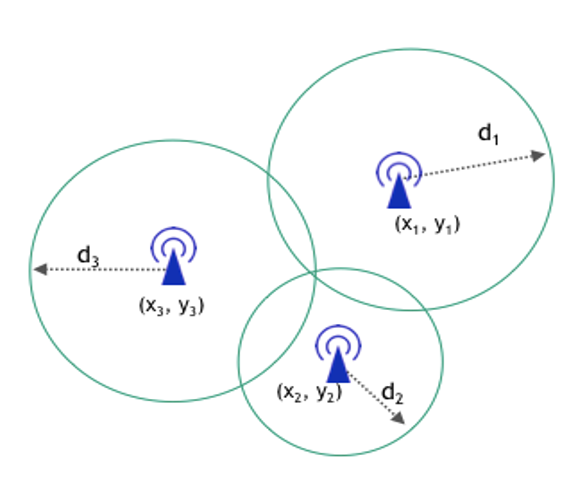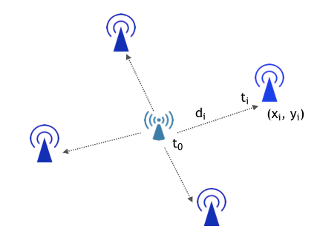Location Tracking with LoRa Technology
Location tracking is an essential part of our day-to-day life. It is crucial not only for personal applications but also a wide range of industries including logistics, healthcare, environmental monitoring and more. The mere ability to determine the location of people, assets, and devices not only improves safety and operations but also opens new possibilities for innovation.
There are several ways location can be tracked, each tailored to specific use cases. GPS, the most common method, is utilized in smartphones, car navigation systems, vehicle tracking, and various industry applications. Cellular tower triangulation, which uses signal strength to pinpoint mobile devices, and other technologies like Wi-Fi Positioning Systems (WPS), Bluetooth, and RFID also play significant roles in location tracking. However, in this article, we will focus specifically on Geo-Location with the help of LoRa (Long Range) technology.
LoRa is distinguished by its ability to enable long-range communications with minimal power consumption, making it ideal for applications where devices need to communicate over extended distances or in challenging environments where other methods may fail. As a key player in the Internet of Things (IoT) technology stack, LoRa supports a multitude of use cases, ranging from agricultural monitoring to urban planning and asset tracking in logistics.
There are two key algorithms using which we can estimate the location of a device. The word ‘estimate’ is used because unlike precise geolocation methods like high-resolution GPS, which can pinpoint locations with accuracy down to a few meters, LoRa-based methods typically provide a less exact position. This variance is due to several factors, including environmental interference, the inherent limitations of signal-based triangulation at long range, and the quality of the signal reception. Despite these constraints, LoRa remains highly effective for many practical applications, particularly where broad location tracking suffices or where GPS services are impractical. The two algorithms are –- Received Signal Strength Indicator (RSSI) based Triangulation
- Time Difference of Arrival (TDoA)
RSSI Based Triangulation
This method estimates the distance of device from each gateway based on the strength of received signal. As signal travels the strength decreases with distance. Keeping this as the basis, following steps are used to estimate the location.

- Signal Transmission – Device transmits a signal which is received by multiple gateways positioned as known locations.
- Signal Strength Measurement – Each gateway measures the strength of the received signal which is called RSSI short for Received signal strength indicator.
- Distance Estimation – Using the measured RSSI values, distance between device and each gateway is estimated. This estimation is based on a pre-determined path loss model which correlates RSSI values to distance. There is much research around it which has resulted in many path loss models. Such a model is Log-distance path loss model.

Time Difference of Arrival (TDoA)
TDoA method involves multiple gateways which received same signal transmitted by a LoRa device. Since in most cases, gateways are statically positioned, the exact location is known. Given this fact, it is possible to estimate the position of device. However, it requires precise synchronization of all gateways involved to ensure the accuracy of the time measurement.
- Signal Transmission – The LoRa device transmits a signal received by multiple gateways.
- Time of Arrival Measurement – Each gateway records the time of signal arrival.
- Time Difference Calculation – The time differences between signal arrivals at different gateways are calculated.
- Distance Estimation – These time differences are used to estimate distances from the device to each gateway.

Challenges
There are certain challenges when it comes to estimating location in LoRa. Some of the key challenges are –- Accuracy – RSSI method is usually less accurate than TDoA. However, RSSI method is easier to implement as it does not require precise time synchronization between gateways.
- Environmental Factors – Buildings and weather can distort LoRa signals affecting location accuracy.
- Time Synchronization – TDoA method requires precise time synchronization across gateways which is a complex process.
- Path loss model – For RSSI method, choosing a right path loss model is challenging. Path loss models vary with different environment. An inaccurate model can lead to incorrect distance estimations which will result in poor location accuracy.
Use Cases
Based on use cases, RSSI/TDoA methods can be used
- Asset Tracking in Warehouses – Locates assets within a warehouse by measuring signal strength from multiple gateways.
- Smart Agriculture – Tracks equipment and livestock locations in agricultural fields based on signal strength from LoRa gateways.
- Wide-Area Asset Tracking: Tracks assets over large geographic areas using time differences in signal arrival at multiple gateways.
- Wildlife Monitoring: Monitors animal movements in remote areas by calculating location from time differences in received signals.
- Smart Cities: Manages urban infrastructure by pinpointing sensor locations using synchronized time differences in signal arrivals.